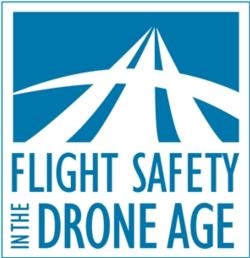Safety Guidance For Manned Aircraft Pilots Operating In The Presence Of Drones
Flight Safety in the Drone Age (FSDA) has been released by the initiative’s Permanent Editorial Board. FSDA offers voluntary guidance to advance the safety of flight when operating near unmanned aircraft, or drones.

The product of extensive peer review within the manned and unmanned aviation communities, it builds upon the foundation of the Aviators Model Code of Conduct (AMCC) initiative, a project of over 15 years’ duration. The guidance addresses critical issues resulting from the presence of drones.
As drones become more common, and as recreational, commercial, and public drone applications proliferate, manned aircraft operators face new challenges. There are now more registered drone operators than manned aircraft pilots, and the likelihood of midair collisions is increasing. Safety standards, rules, and guidelines for drone operators are available and continue to be refined, but guidance for pilots flying aircraft in the vicinity of drones is sorely lacking. Training and safety regimes for manned aircraft are well-defined, data-driven, and rigorously implemented and validated—but they include nothing material with regard to drones.
The FSDA guidance is general in nature. It assumes that pilot awareness and response are necessary where drone safety technologies and rules may not yet have been developed fully or implemented effectively. Pilots are encouraged to review and selectively integrate these recommendations into their operations.
The guidance is organized in five sections (presented by phase of flight, not necessarily in order of importance):
- (1) General Education and Preparation,
- (2) Preflight Operations,
- (3) In-flight Operations,
- (4) Post-flight Operations, and
- (5) Advocacy.
Complementing the FSDA is a safety awareness poster and an annotated technical paper providing analysis, perspective, and support. FSDA is a living document and will be periodically updated to reflect changes in standards, practice, and the aviation environment. The initiative’s drone-related materials are at secureav.com/drones.
Nick Mayhew, Chair of the US Helicopter Safety Team (USHST) Training Working Group stated, “helicopters operating in the low-level environment are particularly at risk from these ‘flying cameras’ intent on getting the best picture. I fully support AMCC’s sensible approach to educating our rotary pilots.” Andrew Niemyer, President, Cirrus Owners and Pilots Association remarked, “in the increasingly crowded airspace we fly in every day, Flight Safety in the Drone Age is a clear and concise guide to safe practices for all of us who share the skies.”
FSDA is the latest work product from the AMCC Initiative. Its prior publications include a family of aviators’ codes of conduct addressing: aviation maintenance technicians, aviators, flight instructors, glider aviators, helicopter pilots, light sport aviators, seaplane pilots, and student pilots.
(Source: AMCC news release)
 ANN's Daily Aero-Linx (05.02.24)
ANN's Daily Aero-Linx (05.02.24) ANN's Daily Aero-Term (05.02.24): Touchdown Zone Lighting
ANN's Daily Aero-Term (05.02.24): Touchdown Zone Lighting Aero-News: Quote of the Day (05.02.24)
Aero-News: Quote of the Day (05.02.24) ANN FAQ: Contributing To Aero-TV
ANN FAQ: Contributing To Aero-TV NTSB Final Report: Cirrus Design Corp SR20
NTSB Final Report: Cirrus Design Corp SR20



